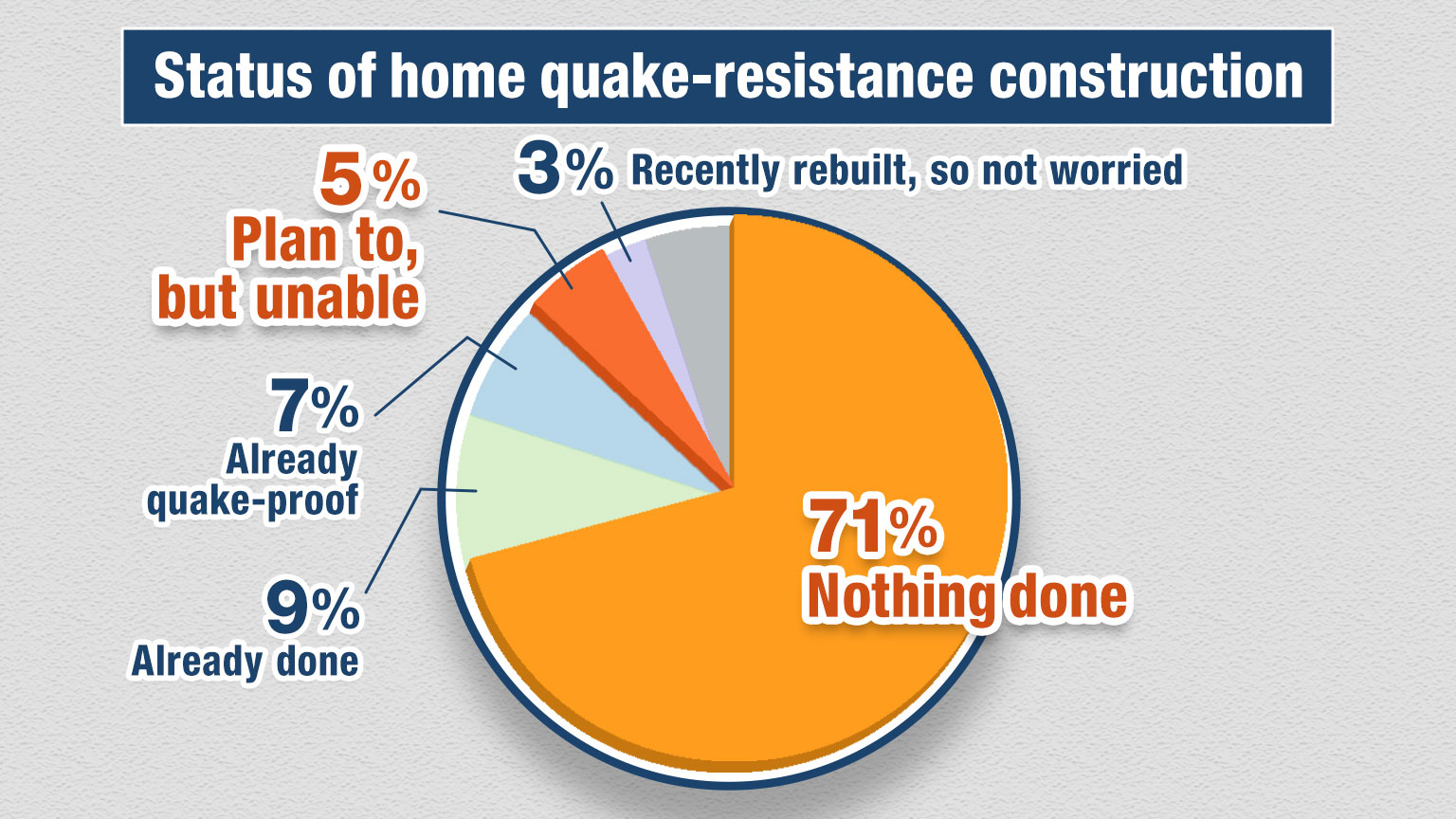NHK surveyed 258 people in the Noto region, which was hit by a magnitude 7.6 quake on New Year's Day, from February to March in cooperation with Professor Sekiya Naoya of the University of Tokyo.

The survey found that at the time of the quake many homes were not quake-resistant.
Seventy-one percent of the respondents said they hadn't conducted seismic retrofitting work on their home, and 5 percent said they tried, but were unable to carry out such retrofitting.
On the other hand, 7 percent said their home was originally quake-resistant, 6 percent said their home had been quake-resistant before December 2020, when seismic activity intensified in the Noto region, and 3 percent said their home had been quake-resistant since December 2020, and another 3 percent said their home had just been rebuilt.

Asked what kind of disaster they thought would damage their home, 45 percent — the largest number — said they didn't think there would be any damage.
Thirty-five percent had expected that their home would collapse in a quake, while 22 percent had thought of a risk of a tsunami, and 12 percent were concerned about damage from landslides.
Expert: Common challenge across Japan
Professor Sekiya Naoya, who specializes in disaster sociology, says insufficient earthquake preparation in the Noto region — where seismic activity had intensified — shows how difficult it is to prepare for another disaster when people think the worst is over.
"When an earthquake occurs, people tend to think that's the end of it and they find it hard to imagine they will suffer from another disaster in the future," Sekiya explained.

He also pointed out earthquake disaster prevention in areas facing an aging society and depopulation is a common challenge nationwide.
"Many homes in such areas are not quake-resistant. The government should take the initiative and provide people with information and support so that they will always be on alert against disaster, including earthquakes," he said.
100-old home survives quake
Daiku Yoshiko experienced the quake in her over 100-year-old wooden house in Wajima City, Ishikawa Prefecture. The dwelling survived the disaster largely intact thanks to reinforcement work conducted 17 years ago.
"The tremor was so strong that I was barely able to cling to the sofa. I'm relieved that my home didn't collapse," Daiku said.

Many homes in her neighborhood collapsed when the earthquake struck on New Year's Day, while Daiku's home survived with only minor damage such as cracks in the walls and fallen roof tiles.
In 2007, her home was badly damaged when a magnitude 6.9 quake struck the area. It was a tough decision for her to conduct seismic retrofitting work to the traditional home, which was built with rooms divided by removable sliding doors in order to be opened to make space for festivals and other occasions. But the sliding doors were replaced with walls to make the structure quake-resistant.

"I wasn't happy about putting in the walls, but I made up my mind to ensure safety," Daiku said.
The retrofitting cost more than building a new home, but she went ahead with the work driven by a strong desire to conserve the house and its long history.
"I wanted to protect the house, which has been preserved by my ancestors. Making it quake-resistant wasn't cheap, but I'm really grateful that my home survived the disaster."
